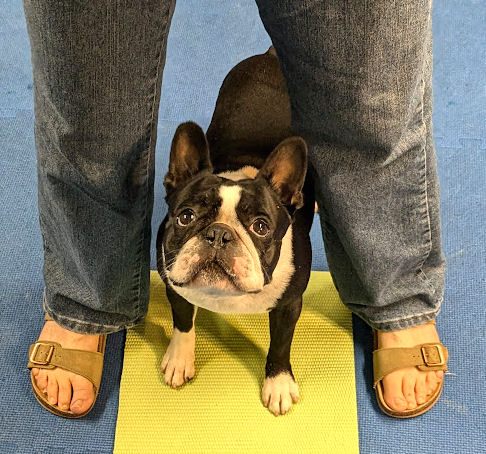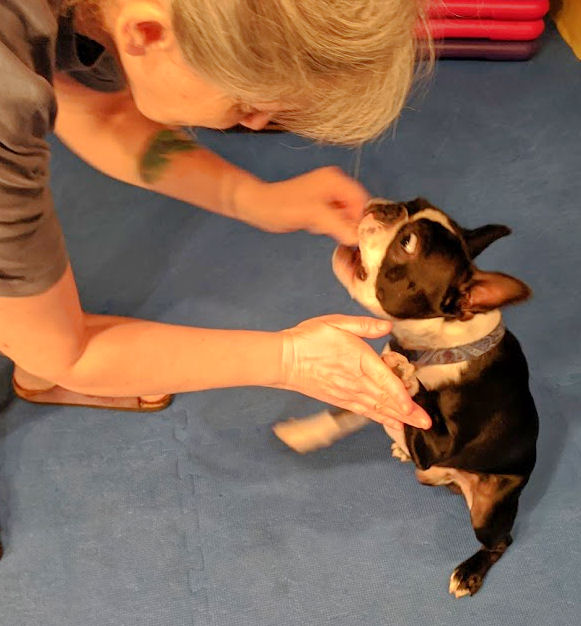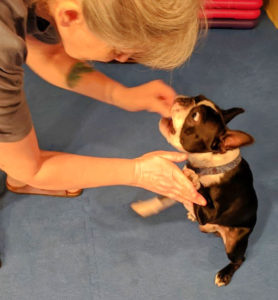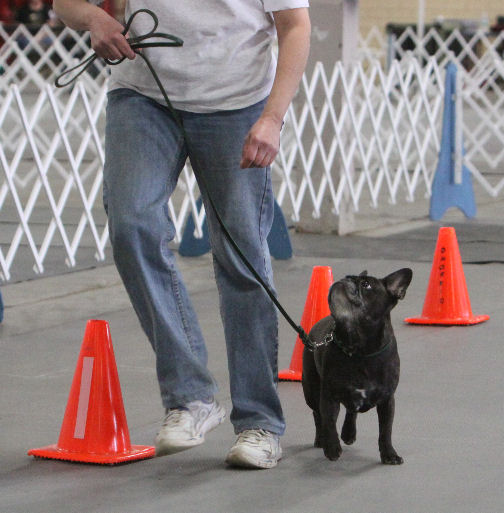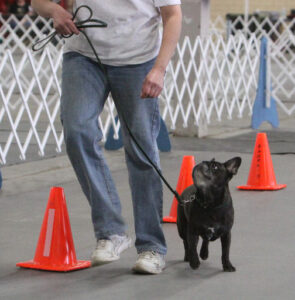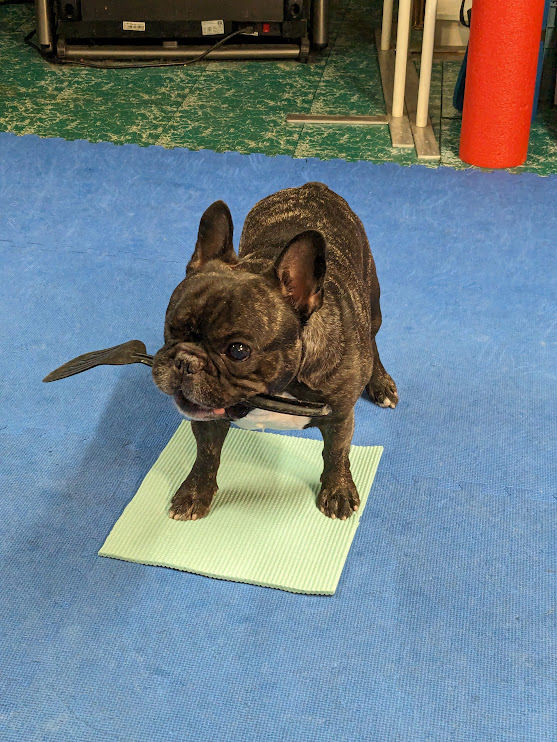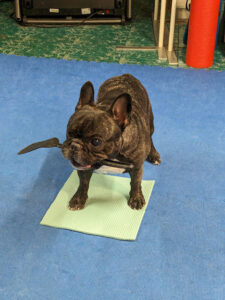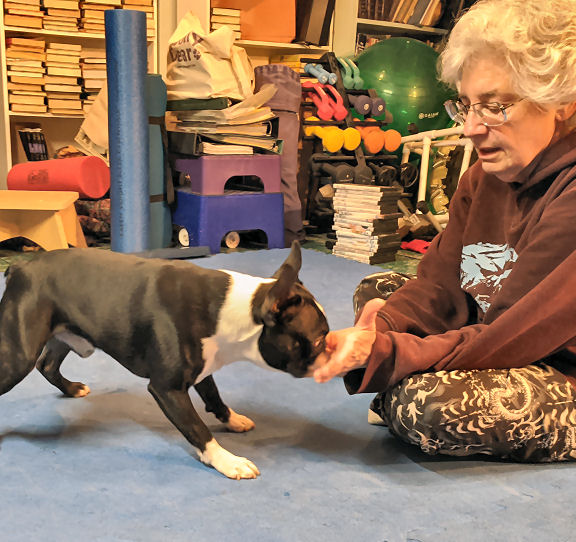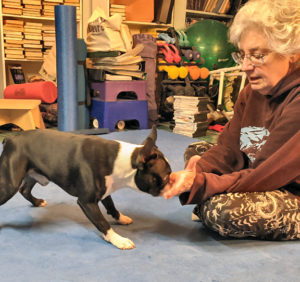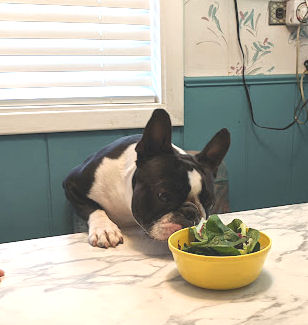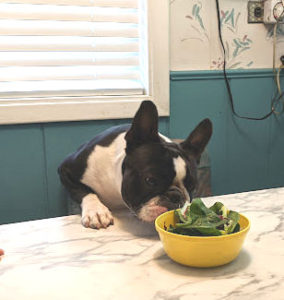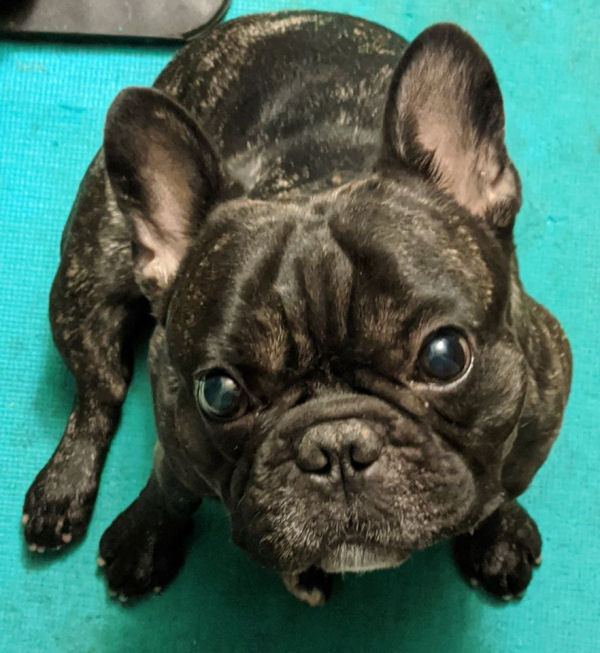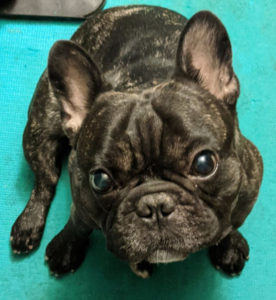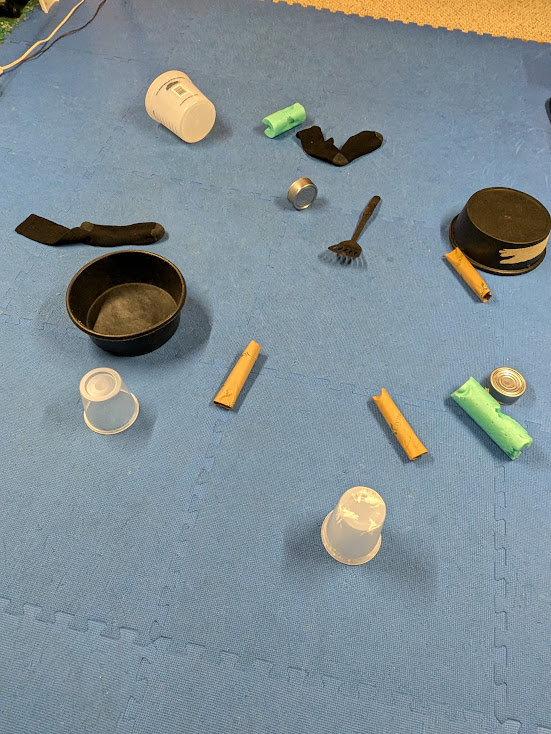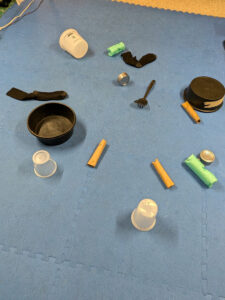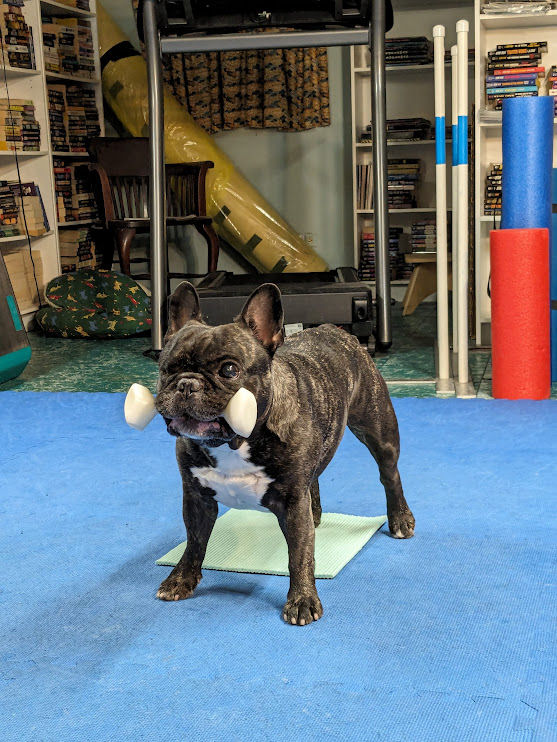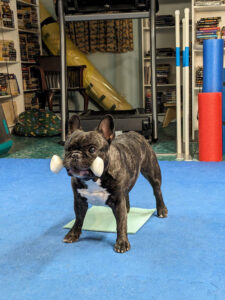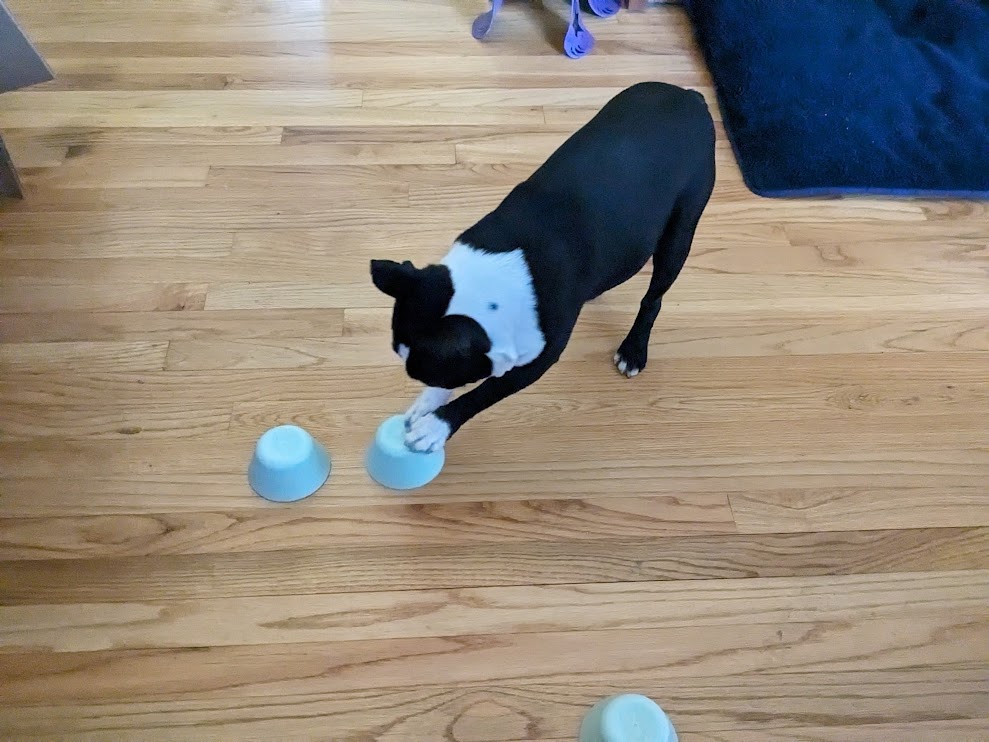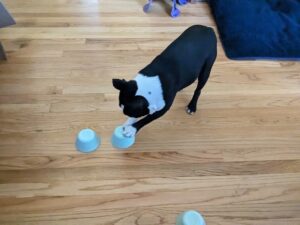We mean that quite literally. This game is to teach your dog to stand between your legs, facing the same way you are. It’s a great position to teach them, especially if there are times when your dog is nervous. The dog training game: Middling shouldn’t be confused with hiding, which should not be encouraged. “Middling” is a safe space, but it’s not a hideaway for timid dogs.
It’s a recent variant we’ve been using for our Puppy Pushups practice. Once your dog knows the positions “Sit!”, “Stand!” and “Down!”, there are only so many combinations you can use. If they know the words, the game can get a bit boring if you let it. We’ve come up with lots of ways of playing; just words, just hand signals, varying distance, etc. And the dogs took each one in stride and mastered it in no time.
But when we tried straddling our dogs, it was as if they’d never heard the words before. You never know how dogs will react to a new scenario until you try it.
Get them centered
If you’ve never tried standing with one leg on either side of your dog, you may be surprised by how freaked out they are. You can almost hear them thinking “What’s this about? You’re being weird!”
So rather than weirding them out, play a preliminary game of “Toss Through.” This is a fast, easy game for most dogs. All you do is stand in front of your dog with your legs wide enough apart that your dog can run through. Show your dog a treat, toss it through your legs, and tell your dog to get it. Then, when your dog’s behind you, bend over, looking through your legs, catch your dog’s eye and toss a treat the other way, so your dog runs between your legs back to front.
It doesn’t take most dogs more than a couple tosses to fall in love with this game. Just be sure the treat you’re using is visible, so your dog can easily find it. If your dog isn’t particularly treat-motivated, you can certainly toss a toy instead.
Next step
Once your dog loves running back and forth through your legs, it’s time to introduce a “Stop!” in the middle. The easiest way to do this is, with your dog behind you, show them the treat and bring them forward. Raise the treat as they come through your legs and say “Sit!” If all goes well, the dog should be right under you. If so, reward.
If not, chances are your dog thought it was too odd and swung their butt around so they’re facing you. That’s the favorite position for most dogs – keeping an eye on you at all times. You can remedy this by giving them a designated spot for the “Sit!”.
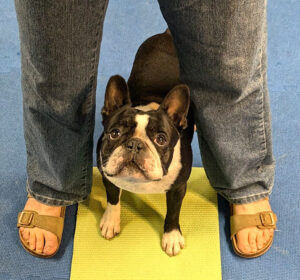
If you haven’t taught your dog “Place!”, now’s the time. Get a small towel, or mat large enough only for the dog to sit on. One of our favorite training tools is a cheap yoga mat that we cut into whatever shapes and sizes we need. That’s ideal for this training.
When your dog knows “Place!”, position the mat between your feet and try again. The similar context will give your dog the information they need to understand. When you’ve achieved the “Sit!,” go for the “Down!” and “Stand!” as well. The mat really helped Simon to understand the new dog training game: middling.
Everything in its place
Just a subtle change, like changing your positions, can throw your dog for a loop. Remember they’re contextual learners. When the context changes, everything’s different. By teaching your dog different variables of familiar behaviors, you increase their understanding and ability to generalize. “Sit!” always means the same thing, no matter where you are or what you’re doing. Teaching dogs how to be flexible and “go with the flow” will add confidence to every aspect of life.

